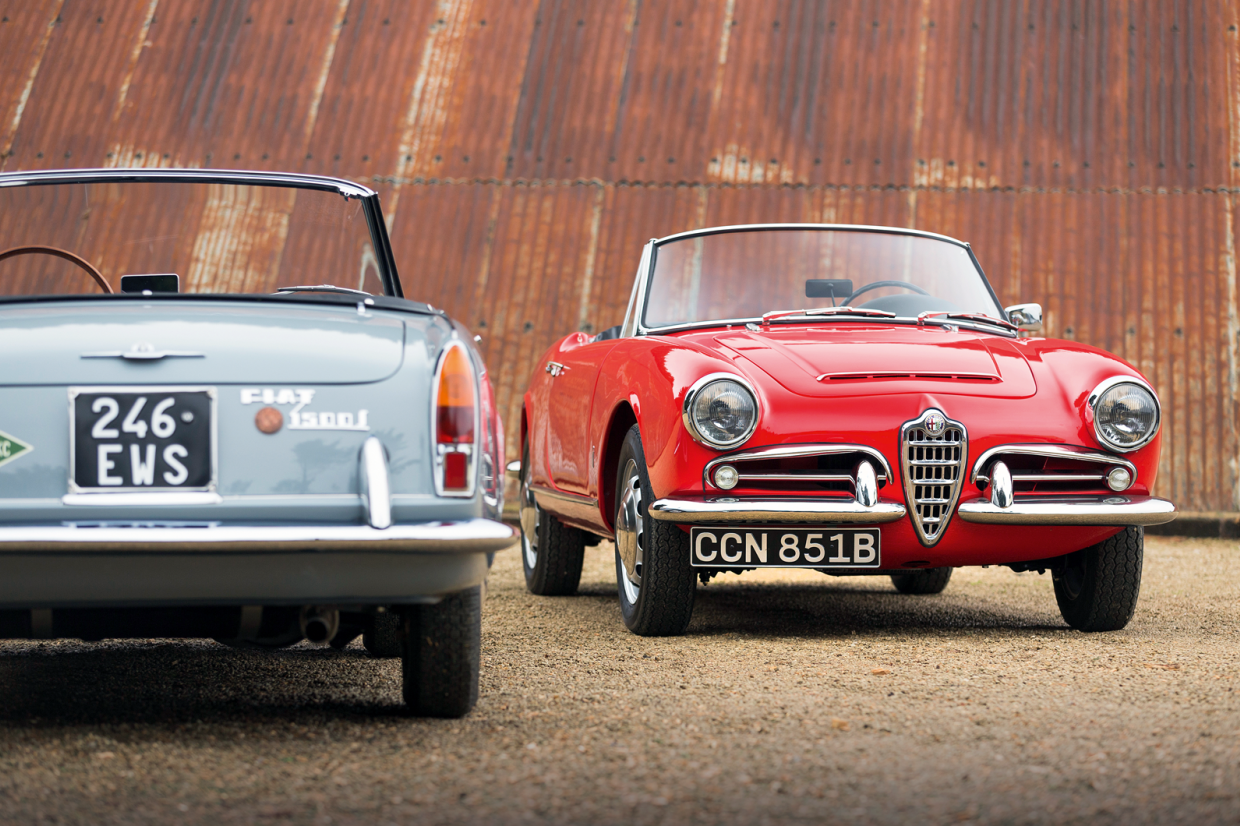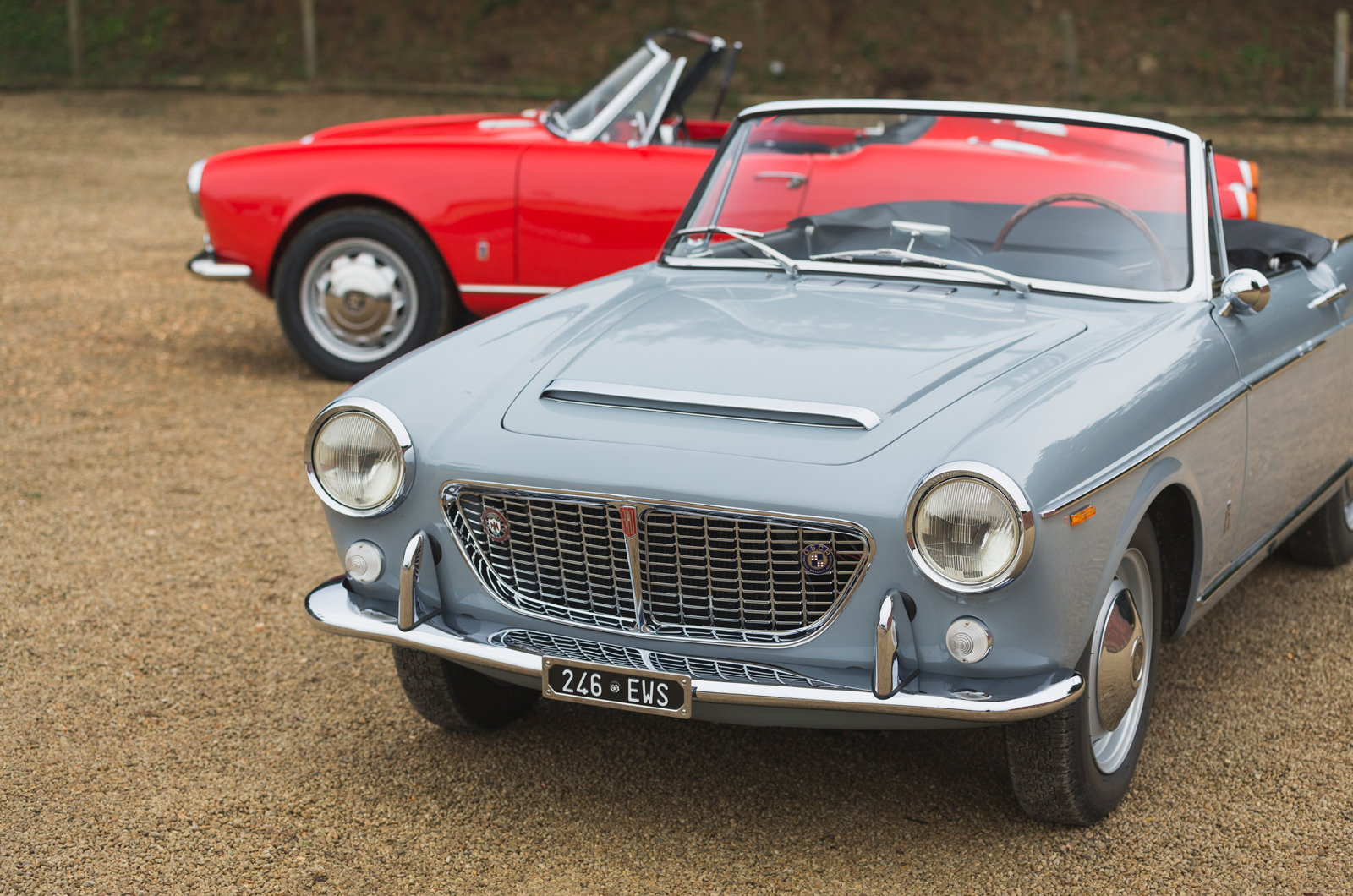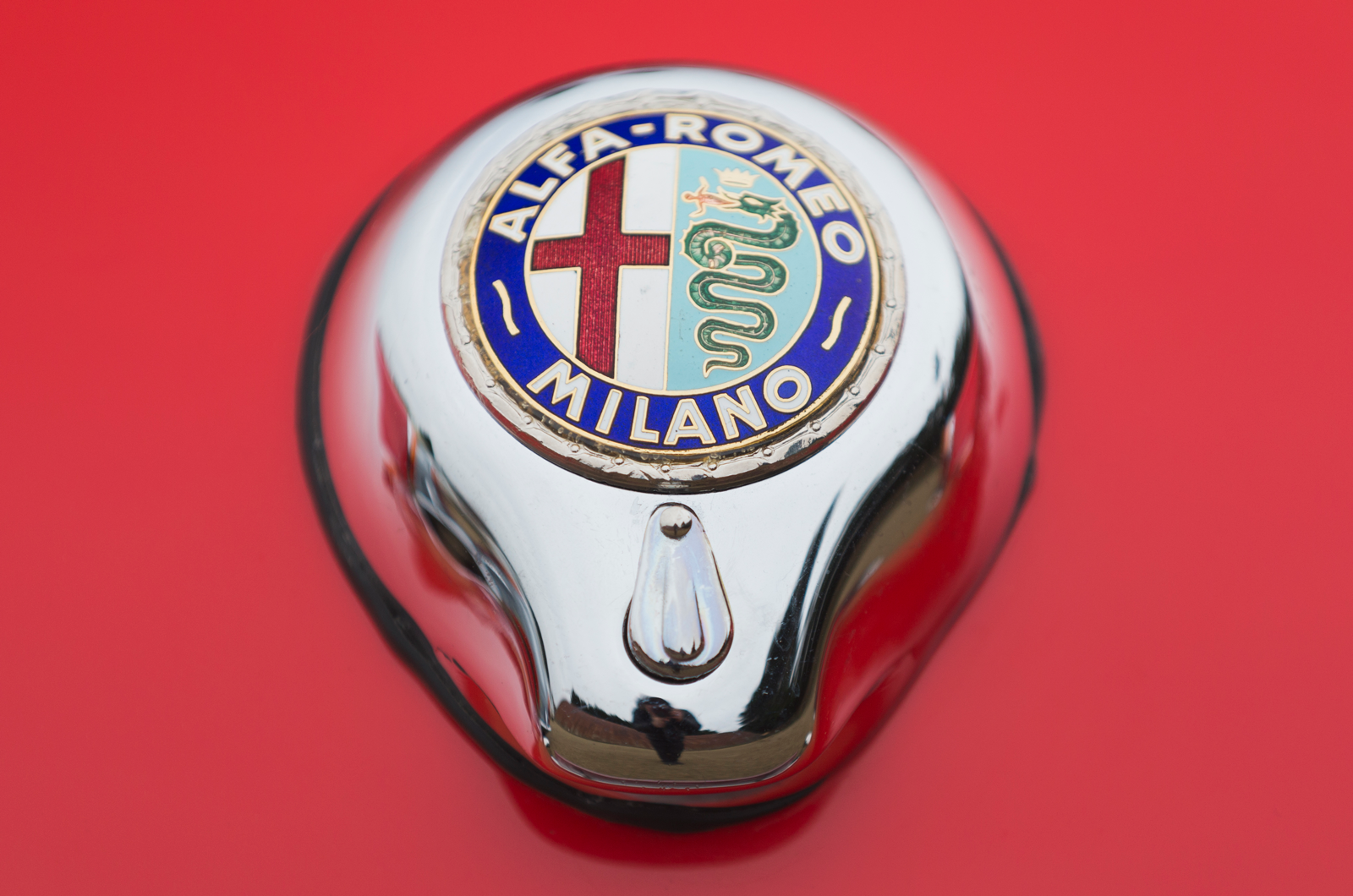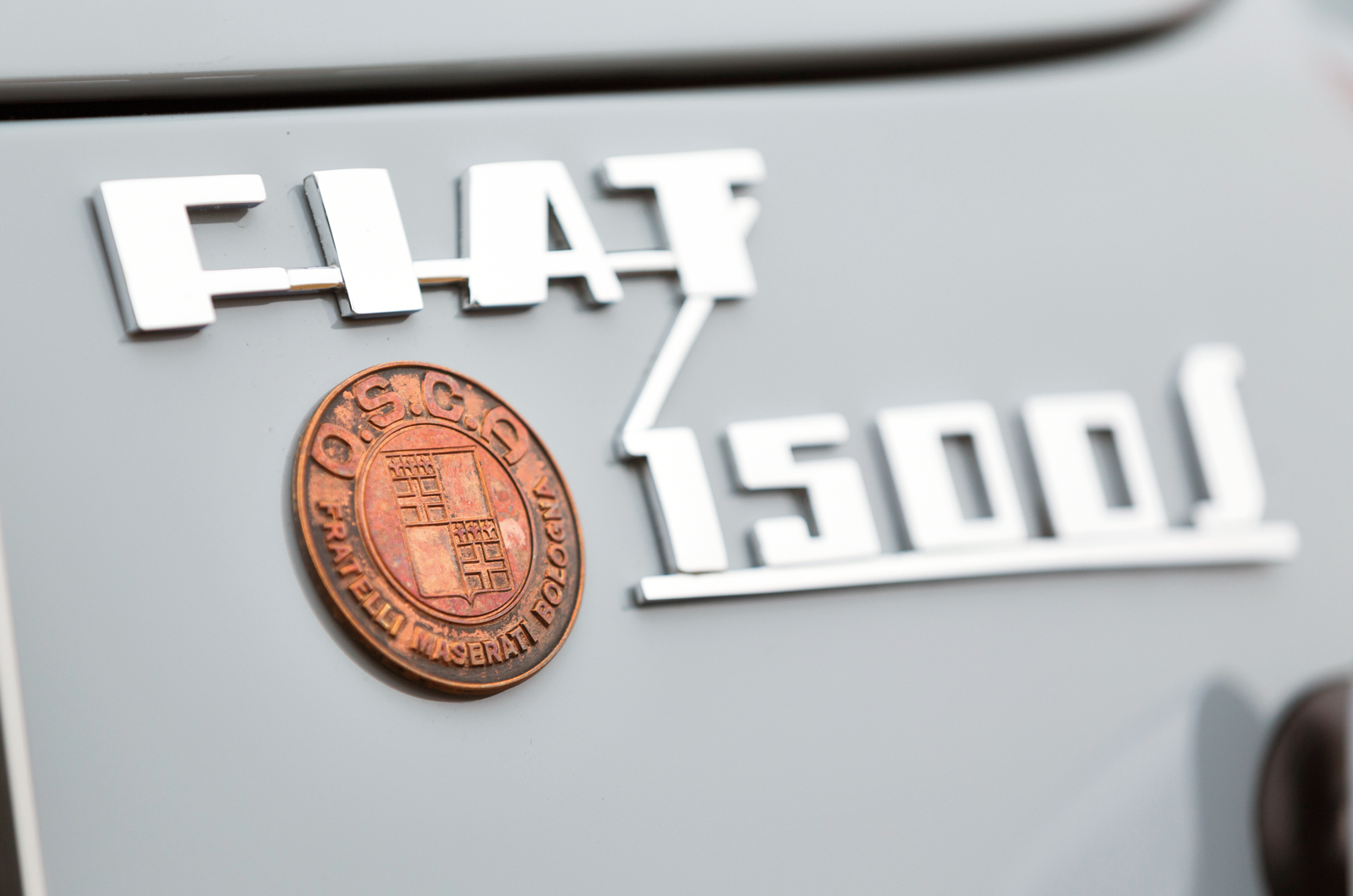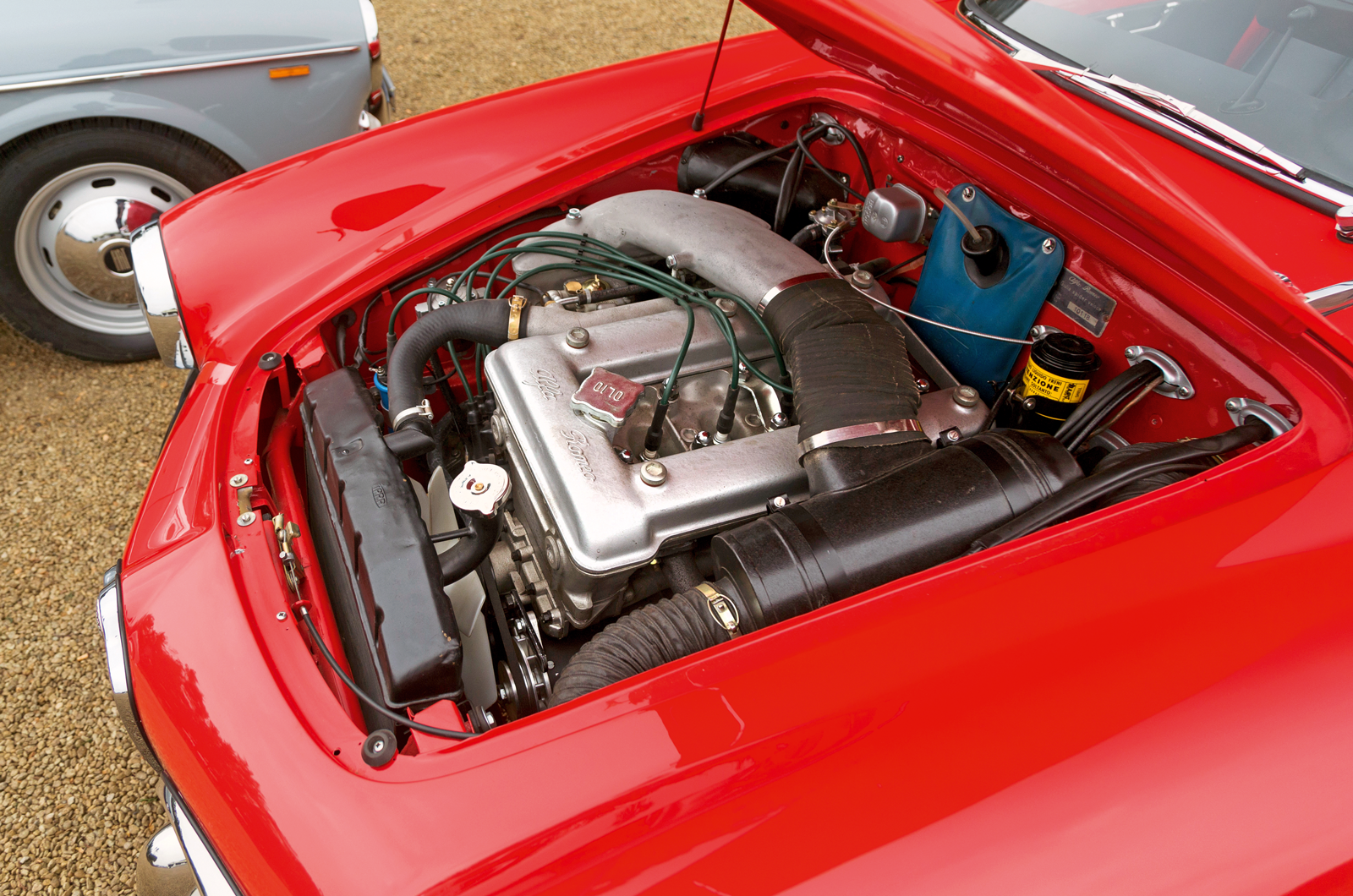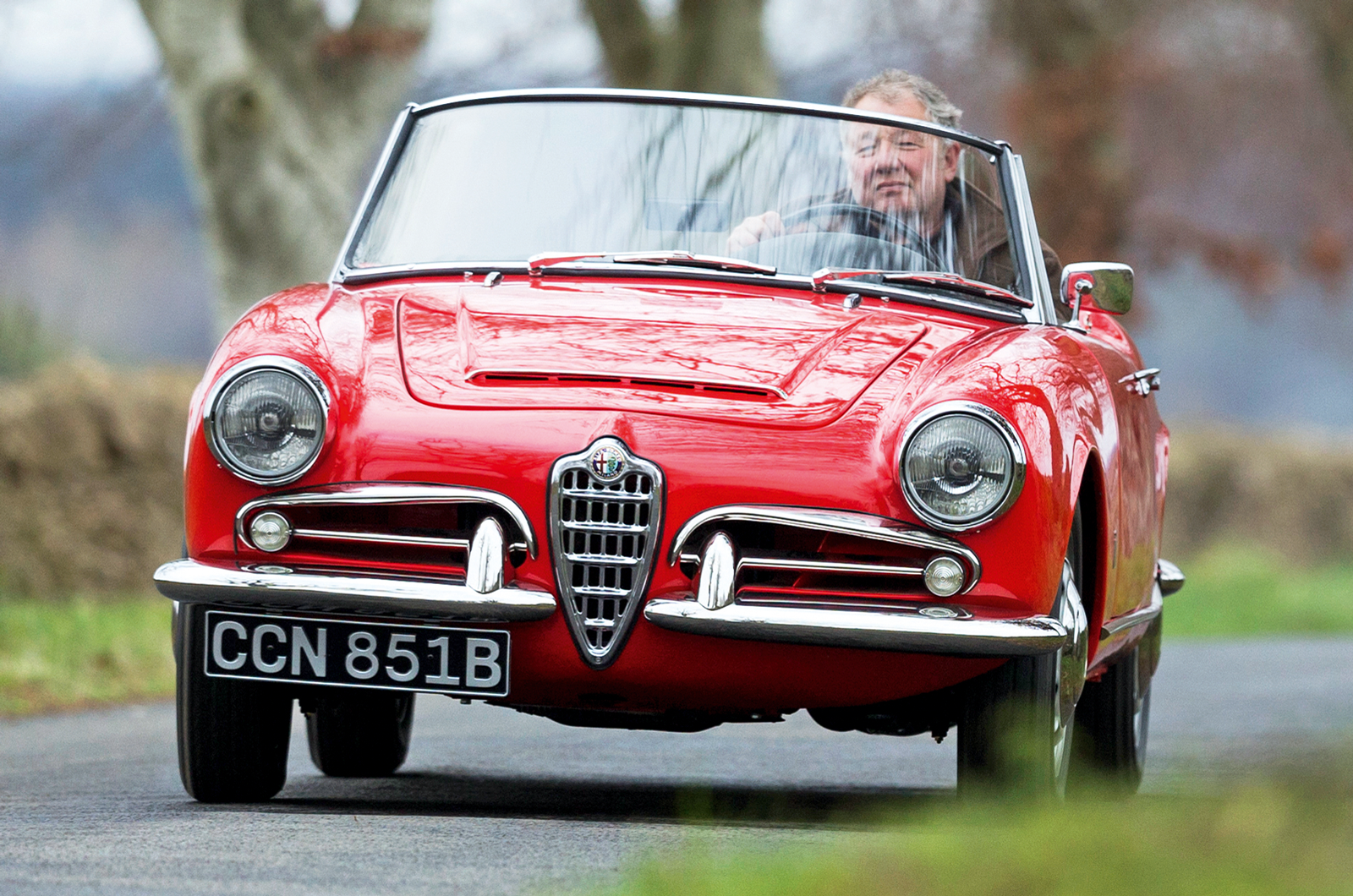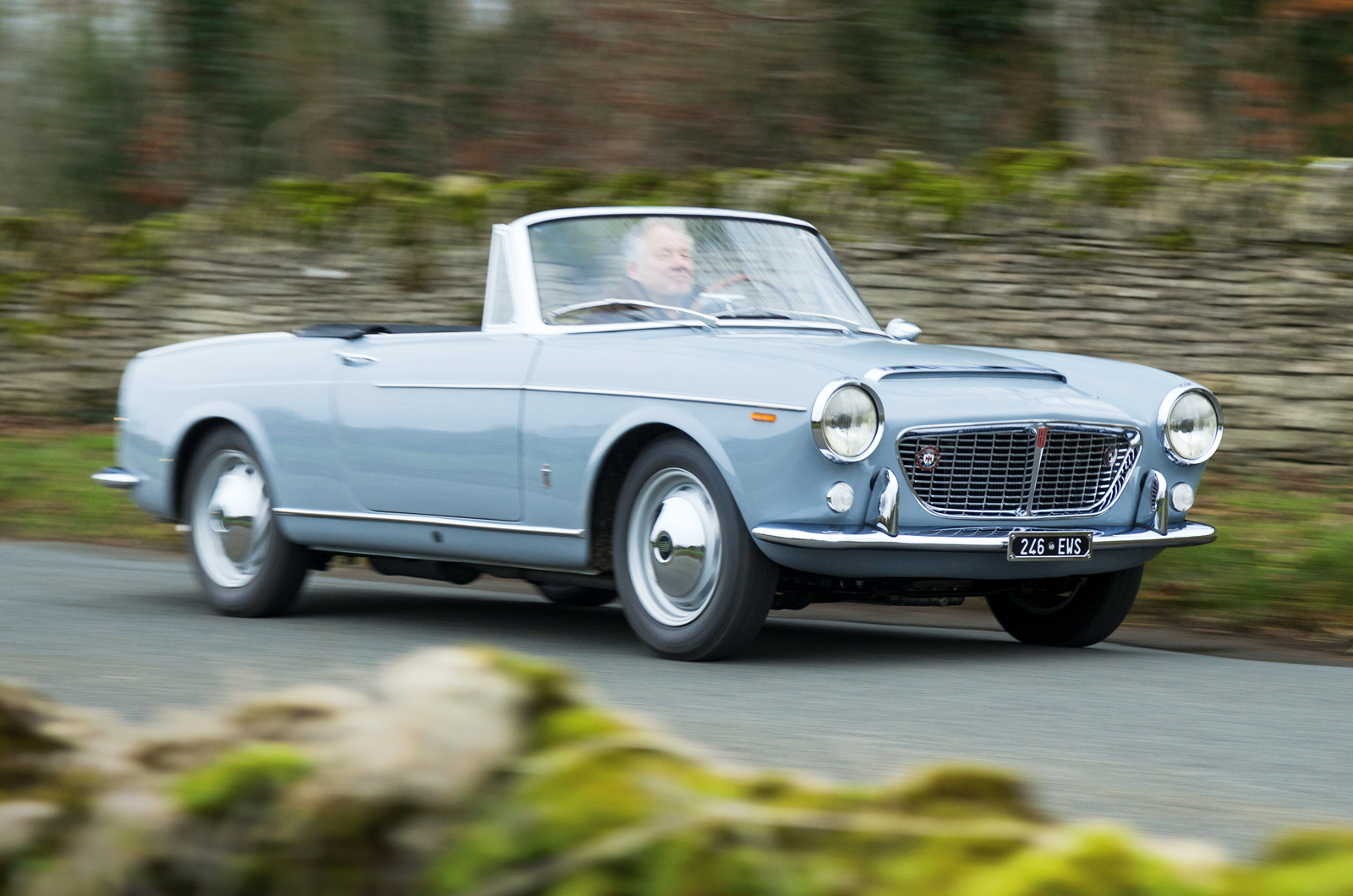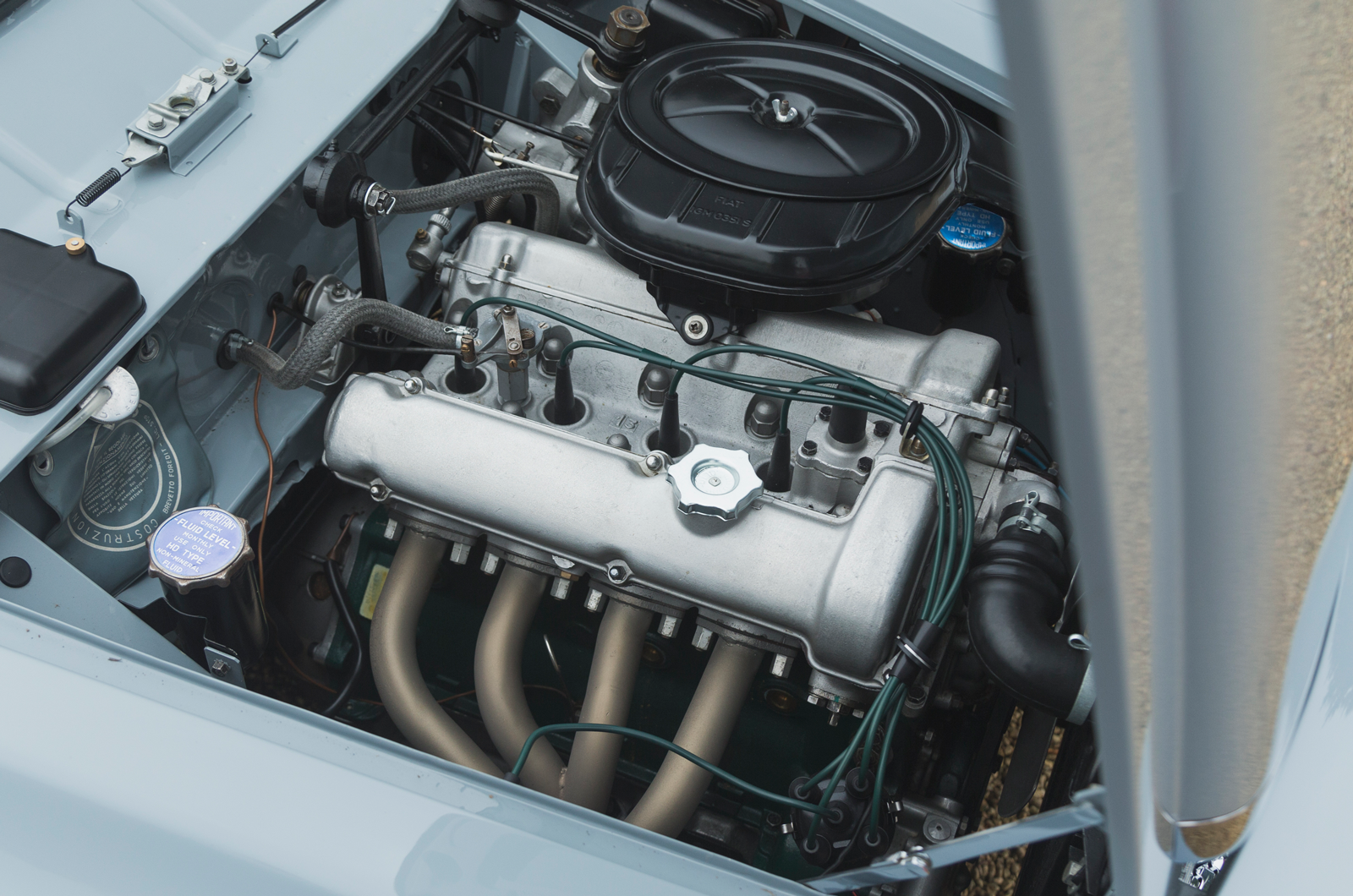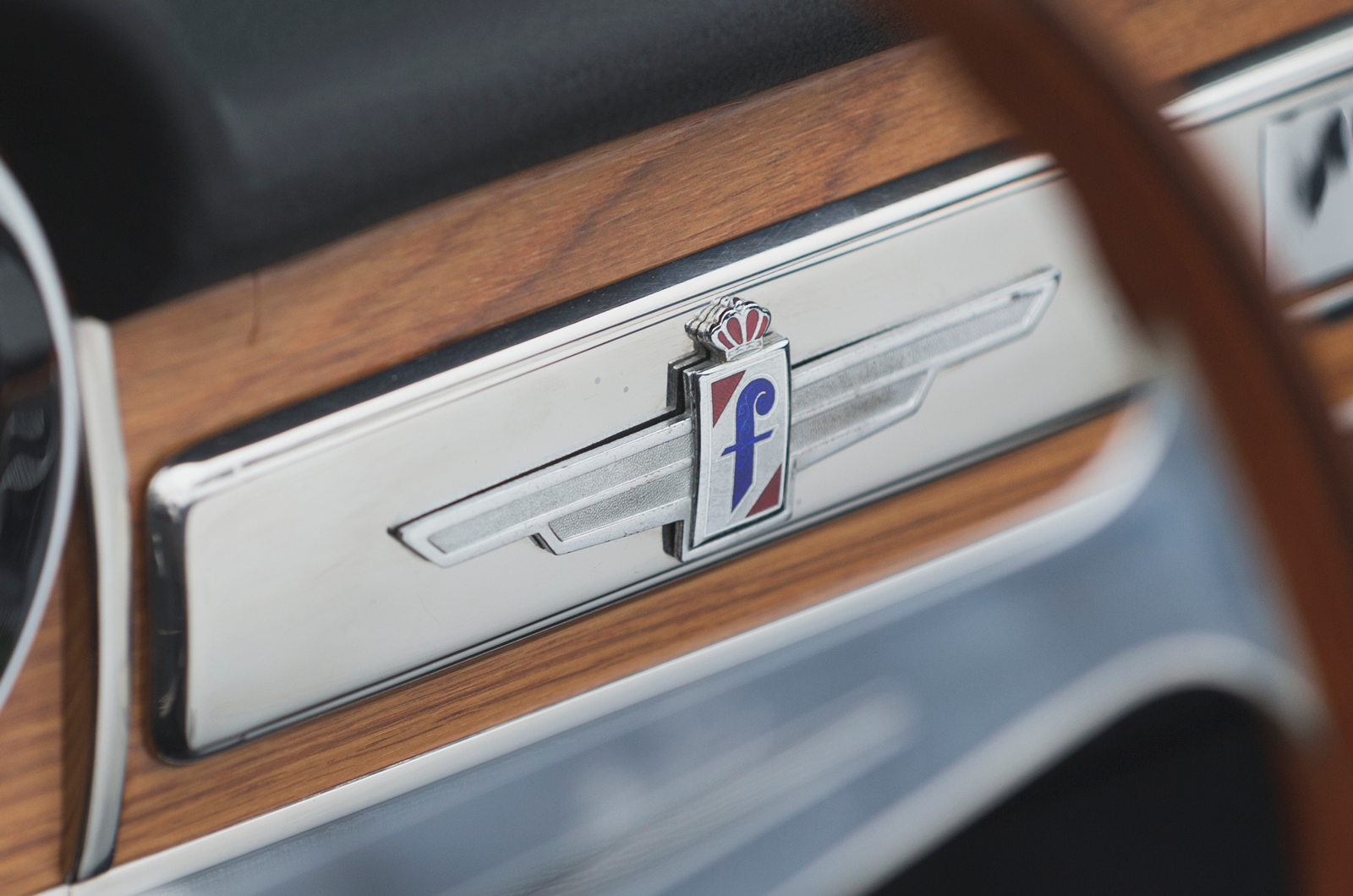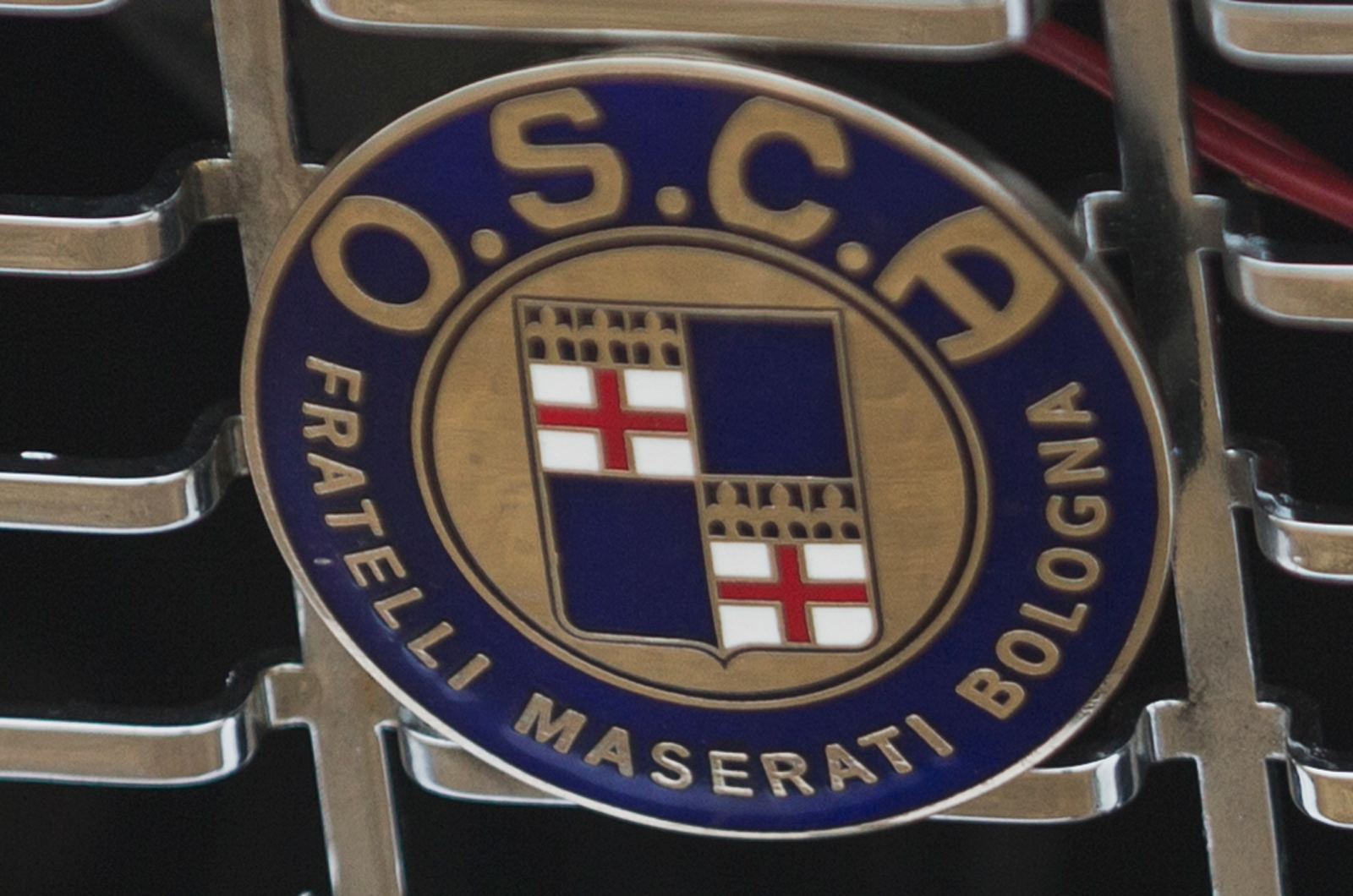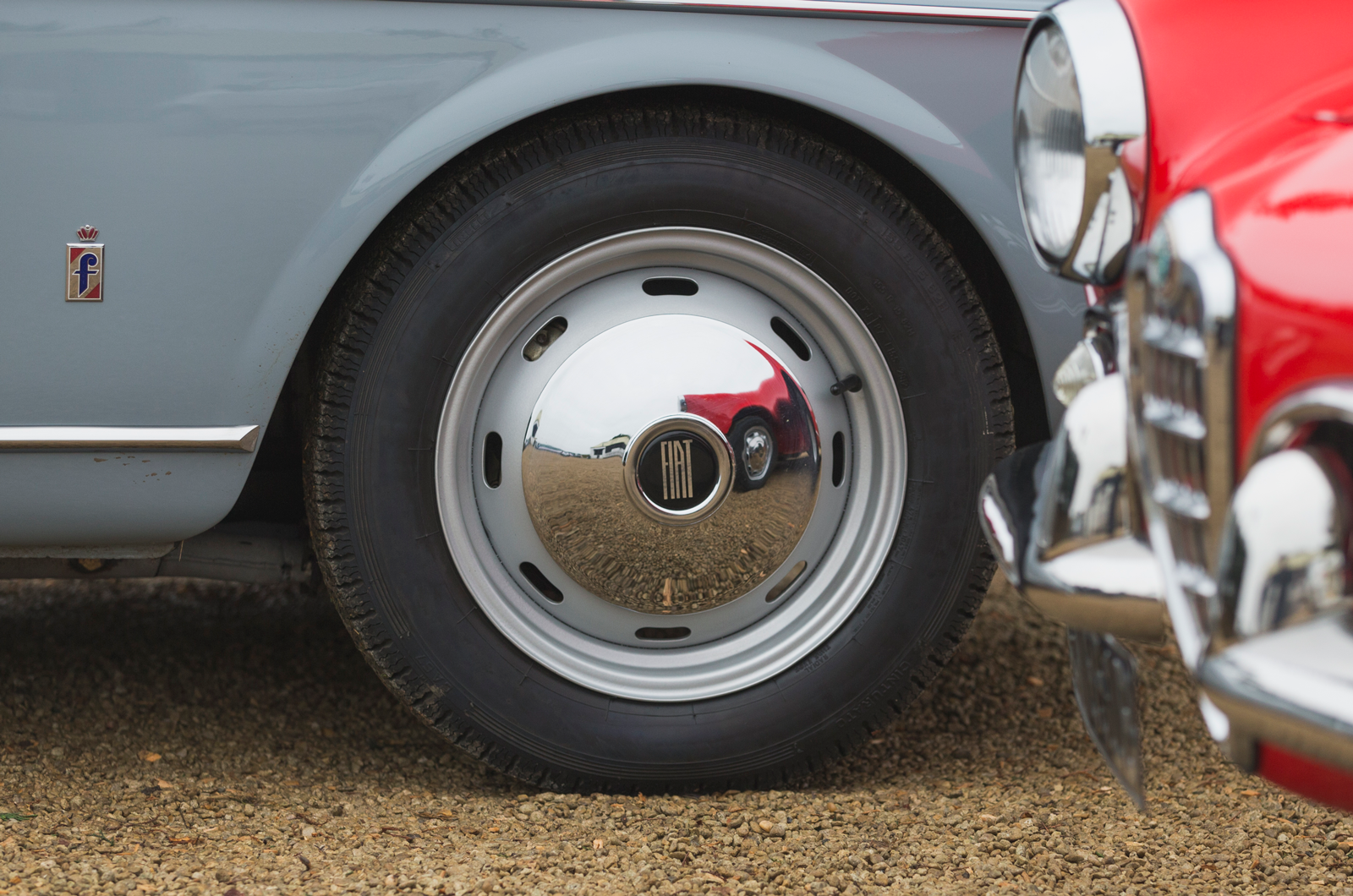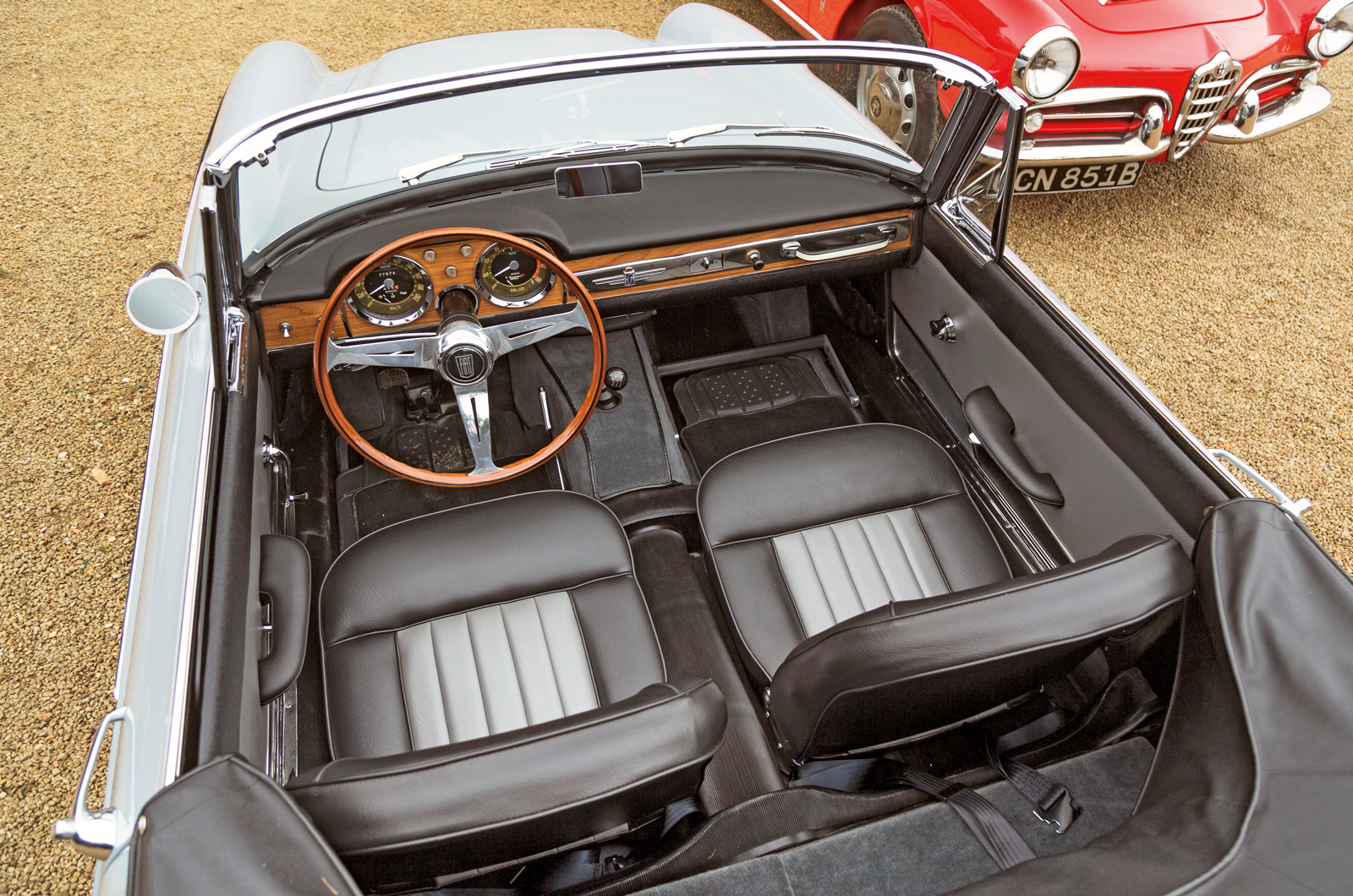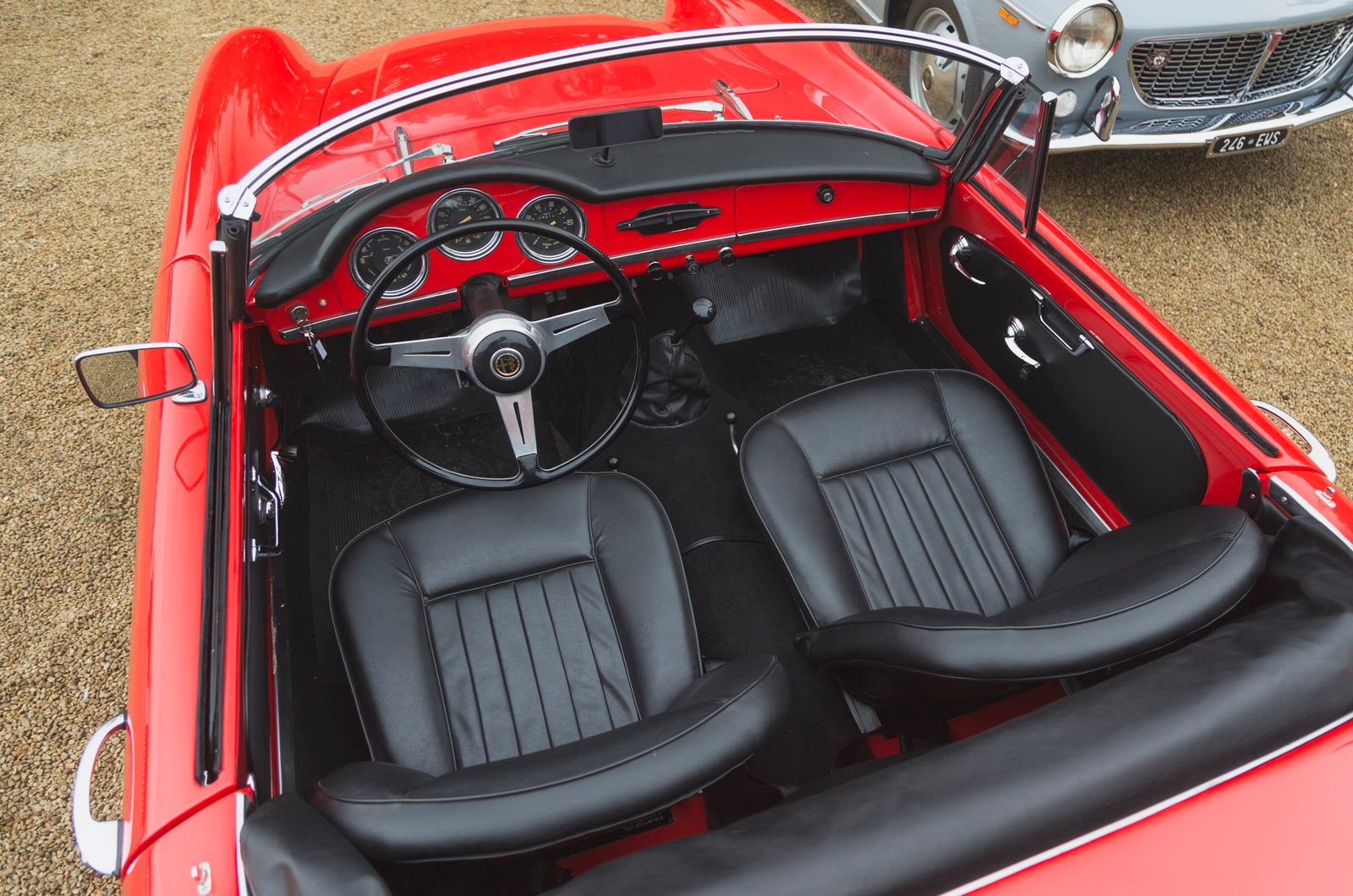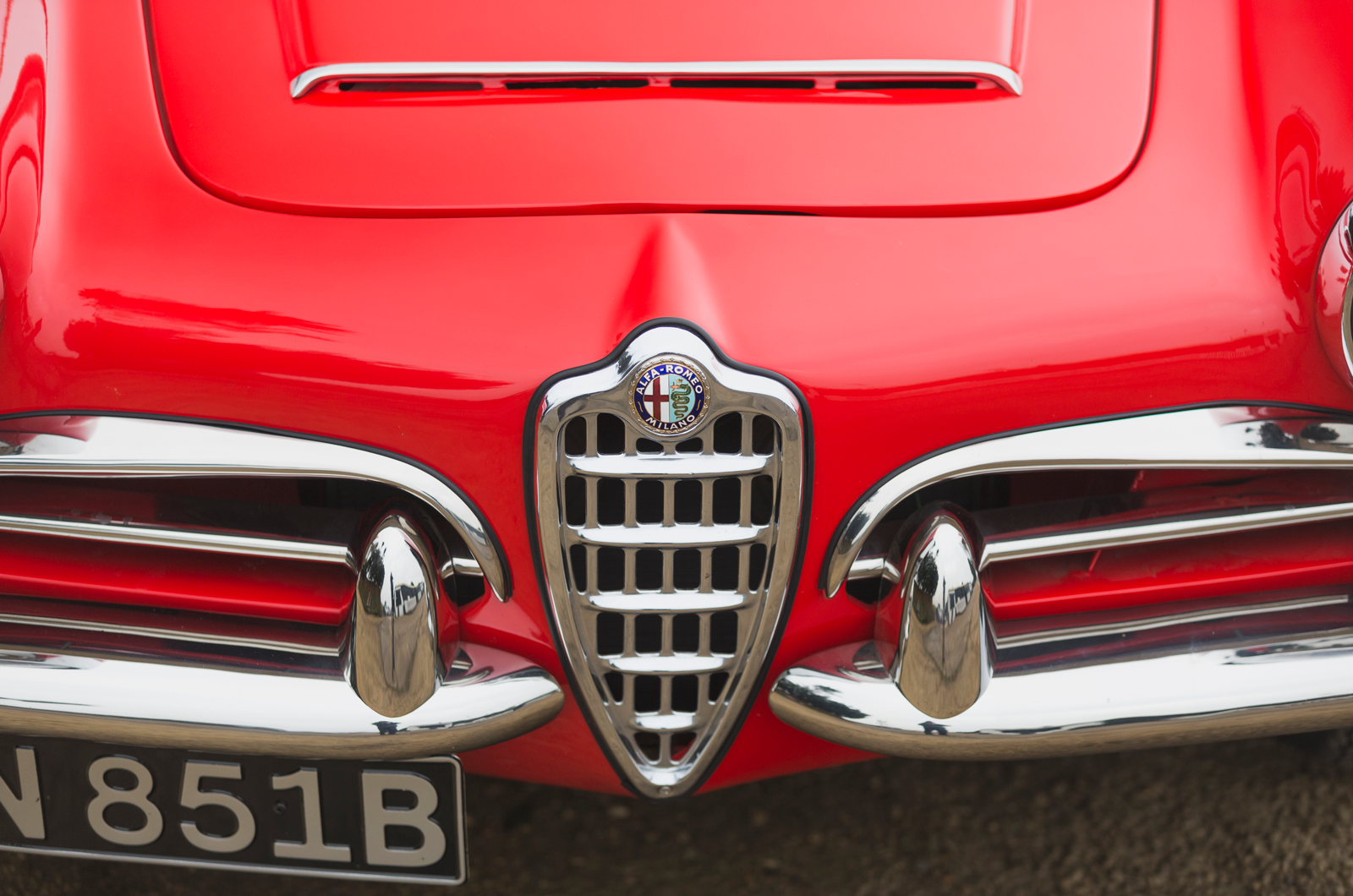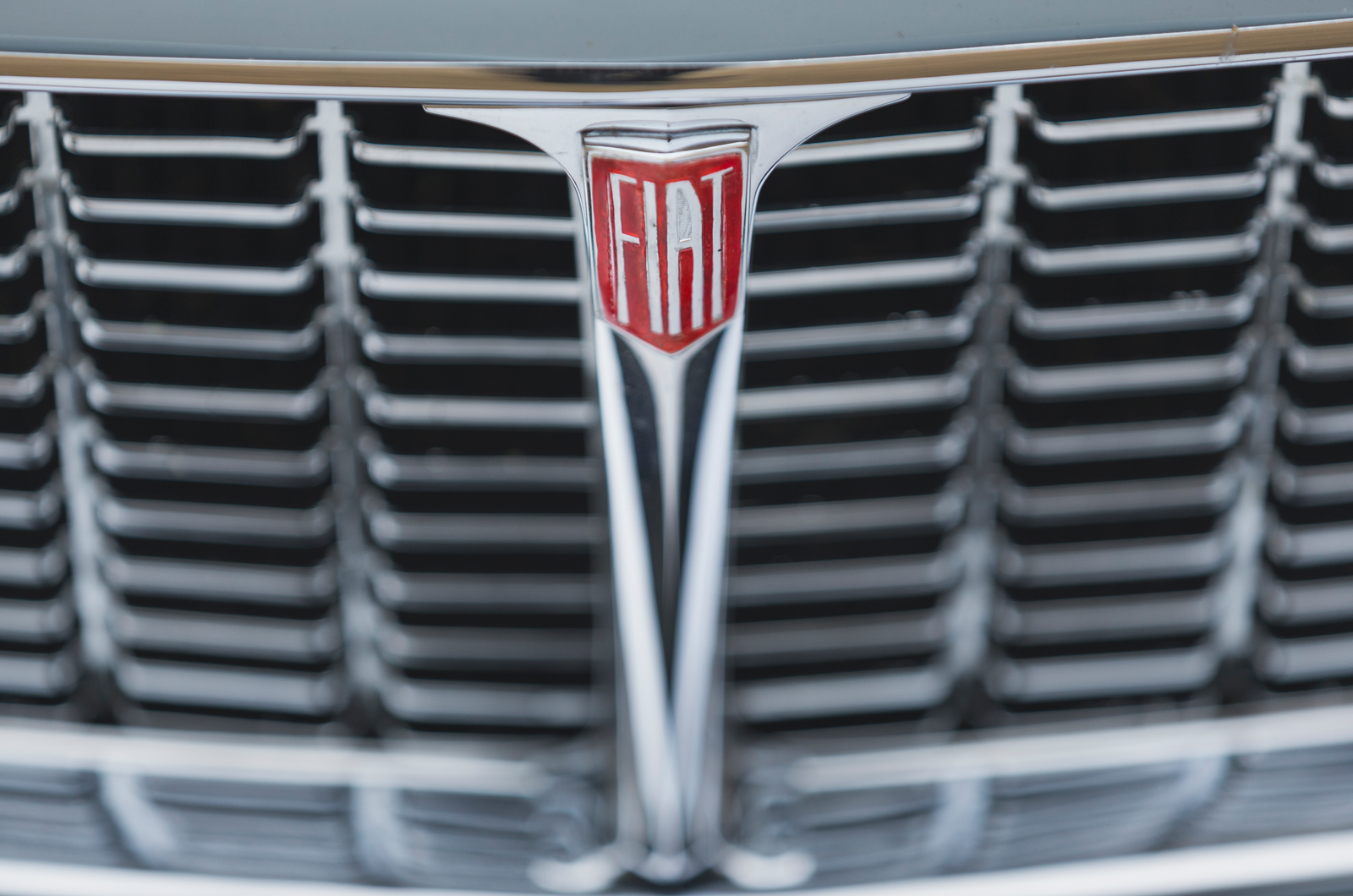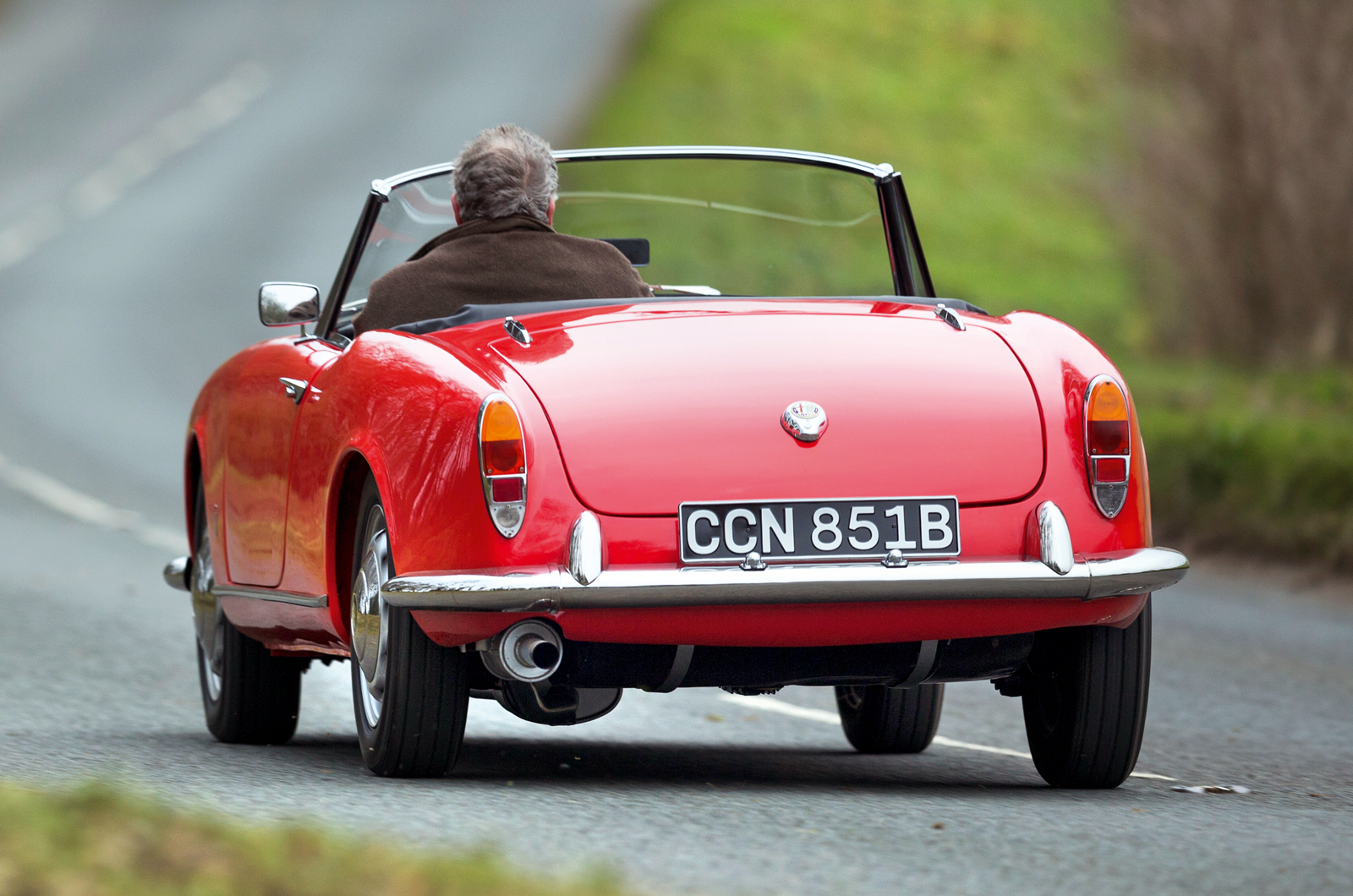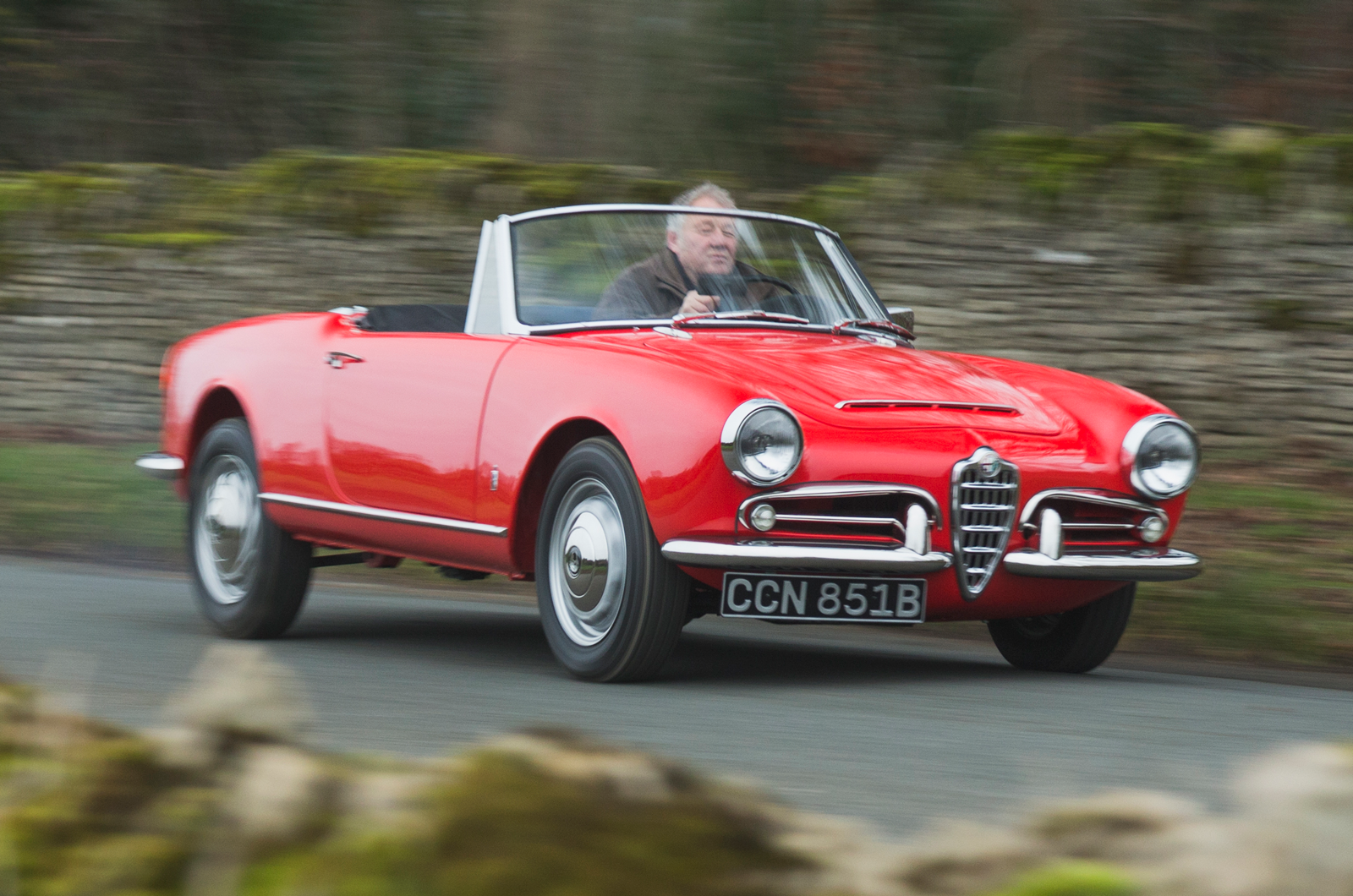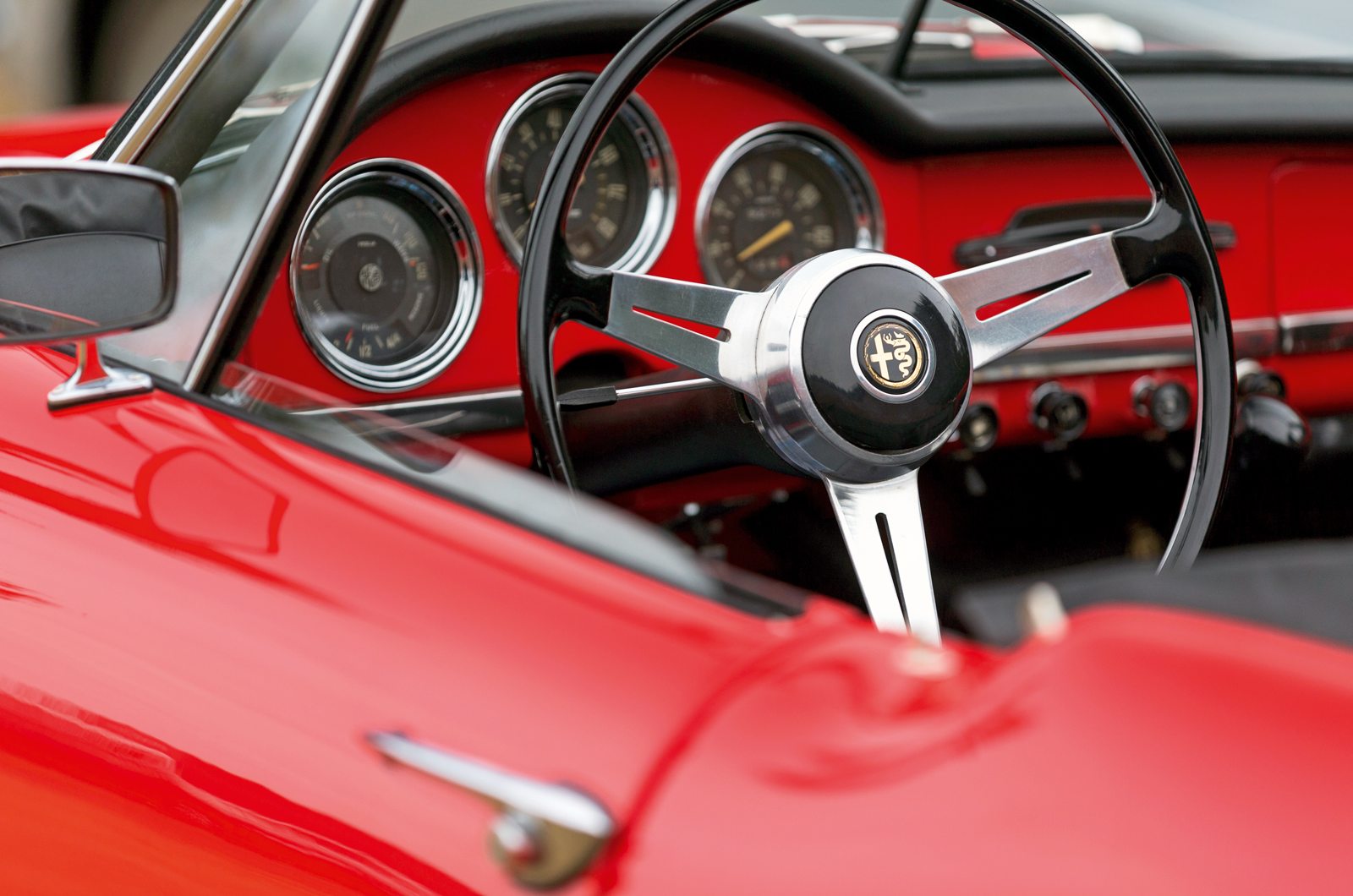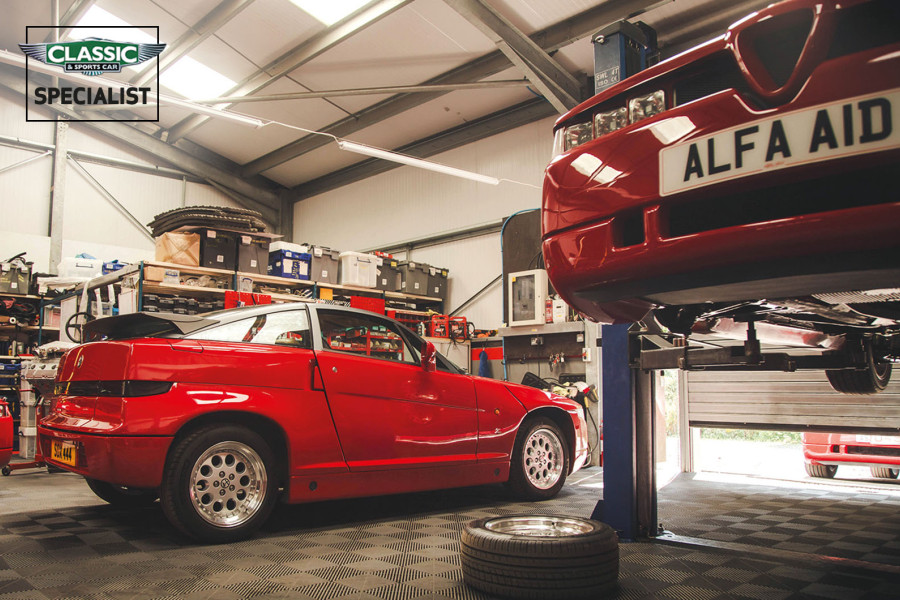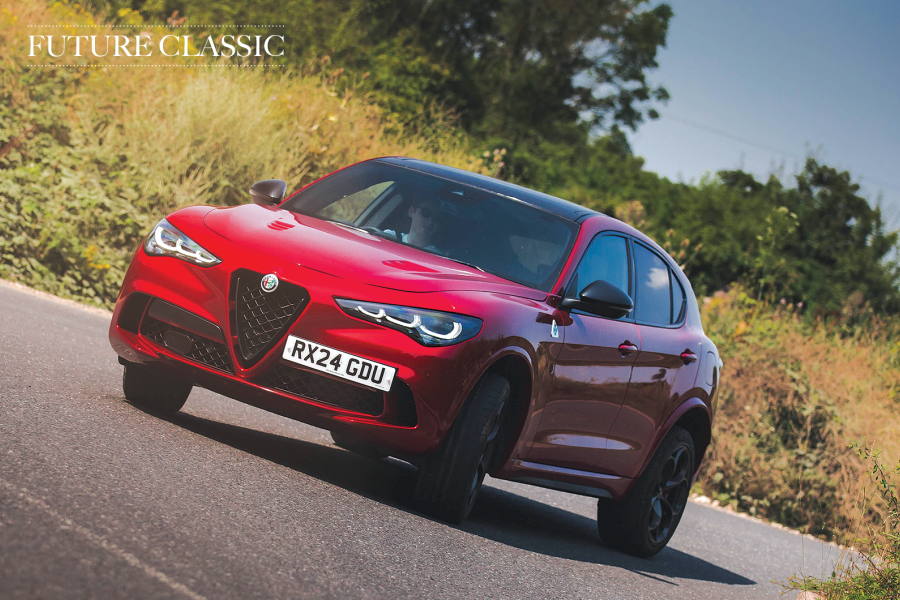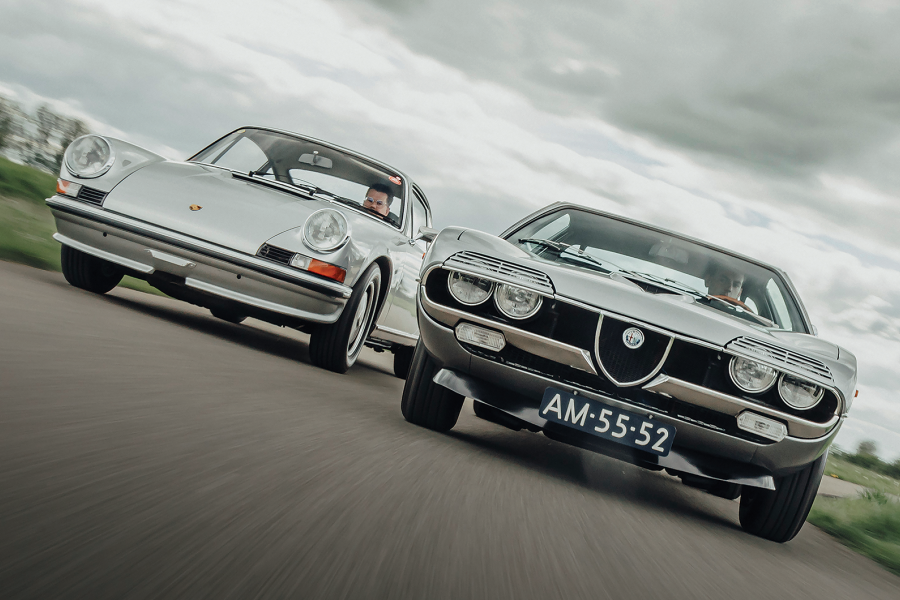Both cars have floor-hinged clutch and brake pedals.
The Alfa’s doors are shallow to make room for deep sills, but its footwells are not as dished as those in the Fiat; there is a touch of long-arm short-leg posture about the driving positions in both.
This Giulia’s well-stuffed seat cushions don’t ‘give’ much post-restoration, so even people of average height find that their foreheads sit in the slipstream above the windscreen frame.
The Alfa’s bonnet is rear-hinged, with the engine canted slightly over to the right to get clearance.
Despite being significantly more powerful and lighter than the Fiat 1500S, the Alfa Romeo Giulia Spider Veloce reaches 60mph from rest just 0.1 secs faster
Under a front-hinged bonnet, the Fiat’s twin-cam unit, with its elegantly formed manifolds, is a similarly snug fit.
There is the usual Italian ‘colostomy bag’ screenwash reservoir and an unexciting airbox, but the eye is drawn to the arrangement of bushed drop-arms for the steering-box linkage on the firewall, which creak during low-speed manoeuvring.
In the UK, dealer Huxford and Son offered right-hand-drive conversions on the 1500S, which, at first, was listed as ‘POA’ in the UK.
Both the Alfa Romeo Giulia Spider Veloce and the Fiat 1500S are surprisingly refined
Both cars need fairly extensive throttle pumping to fire from cold, but soon warm to the task.
They bark healthily when roused, yet also tick over quietly and evenly, and must have represented the ultimate in four-cylinder road-car engine technology in the early ’60s in the way they tolerate low speeds while pottering through town as well as enjoying high revs with equal good humour and refinement.
With hoods down, both are surprisingly quiet – without excessive wind buffeting – and they have sufficient suspension movement to ride firmly but well, without scuttle shake.
The Alfa Romeo Giulia's extra power and slicker gearshift make it feel more purposeful than the Fiat 1500S
Of the two, the Giulia rolls more obviously but feels handy and almost modern, rarely betraying its near-60 years.
It burbles and sucks through its Weber 40s and, being 20bhp up on the 1500S (combined with a substantial weight advantage), it can’t help but feel marginally the stronger of the pair, with a gear for every eventuality and an easy stride that makes fast progress natural.
If anything the Osca engine in the Fiat sings even more sweetly, but its handy gearchange cannot match the slick action of the Giulia’s shift, with its spring-loaded centre bias that allows you to drop from fifth to fourth as fast as you like and with strong – but never obstructive – synchromesh on all the other ratios, which, like the well-located rear axle, are quiet.
The Alfa Romeo Giulia rolls through corners more than the Fiat 1500S; here it can be seen pitching nose-down while on the brakes
Coil-sprung all round, the Alfa’s bodyshell feels slightly stiffer than the Fiat, of-a-piece with its suspension and blessed with beautifully accurate steering that does not kick back.
The Fiat feels safe and steady through corners, and you would never guess it had cart springs controlling its back axle.
Totally forgiving, it’s a car you learn to exploit quickly. It drifts easily on its skinny little tyres but the steering – slack around the straight-ahead – is porridgy after the Alfa and feels lower-geared although, at three turns lock-to-lock, it isn’t especially.
The Alfa Romeo Giulia Spider Veloce’s interior is a masterpiece of Minimalism
Even if the Giulia didn’t drive so well the looks might get you anyway: with its hunched ’screen, curved hips and short overhangs it has a compact sense of purpose about it somehow lacking in the Fiat’s pleasant, balanced, yet slightly more formal lines.
While the Alfa summons images of Edward Fox crossing France, in his white/blue example, for his murderous appointment with General de Gaulle in The Day of the Jackal, there is an elegant playfulness about the Fiat that suggests an Audrey Hepburn type in a technicolour romantic comedy.
The Alfa Romeo Giulia Spider Veloce’s purposeful lines contrast against the Fiat-Osca 1500S Cabriolet’s more mild look
Despite the (mostly) clear superiority of the Giulia, I would find it hard to choose between these two. A certain familiarity with the Alfa initially draws you to the novelty of the Fiat.
If its pretty shape, balanced chassis and nice finish don’t quite hang together as completely as the Giulia’s, it has a pleasant, carefree character bereft of the bar-room clichés that attend the mythology of all things Alfa Romeo.
Images: Luc Lacey
Thanks to Classic Motor Hub
Factfiles
Alfa Romeo Giulia Spider Veloce
- Sold/number built 1964-’65/1091
- Construction steel monocoque
- Engine all-alloy, dohc 1570cc 'four', twin Weber carburettors
- Max power 112bhp @ 6500rpm
- Max torque 96Ib ft @ 4500rpm
- Transmission five-speed manual, RWD
- Suspension: front independent, by wishbones rear live axle, radius arms; coil springs, telescopic dampers f/r
- Brakes discs
- Length 12ft 10½in (3924mm)
- Width 5ft 2¼in (1581mm)
- Height 4ft 4½in (1334mm)
- Wheelbase 7ft 4¾in (2254mm)
- Weight 1860Ib (844kg)
- 0-60mph 10.5 secs
- Top speed 109mph
- Mpg 25-30
- Price new £1498
- Price now £90,000+*
Fiat-Osca 1500S Cabriolet
- Sold/number built 1959-’63/3089
- Construction steel unitary
- Engine iron-block, alloy-head, dohc 1491cc 'four', single Weber carburettor
- Max power 80bhp @ 6000rpm
- Max torque 77Ib ft @ 4000rpm
- Transmission four-speed manual, RWD
- Suspension: front independent, by wishbones, coil springs rear live axle, semi-elliptic leaf springs; telescopic dampers f/r
- Brakes discs
- Length 13ft 2¾in (4032mm)
- Width 4ft 12in (1524mm)
- Height 4ft 3¼in (1308mm)
- Wheelbase 7ft 8¼in (2343mm)
- Weight 2260Ib (1025kg)
- 0-60mph 10.6 secs
- Top speed 105mph
- Mpg 30
- Price new £1500
- Price now £60,000*
*Prices correct at date of original publication
READ MORE
Your classic: Alfa Romeo Spider Veloce
Going for it: Fiat Dino 2000 Coupé and 2300S Coupé
27 rare classic roadsters
Martin Buckley
Senior Contributor, Classic & Sports Car
